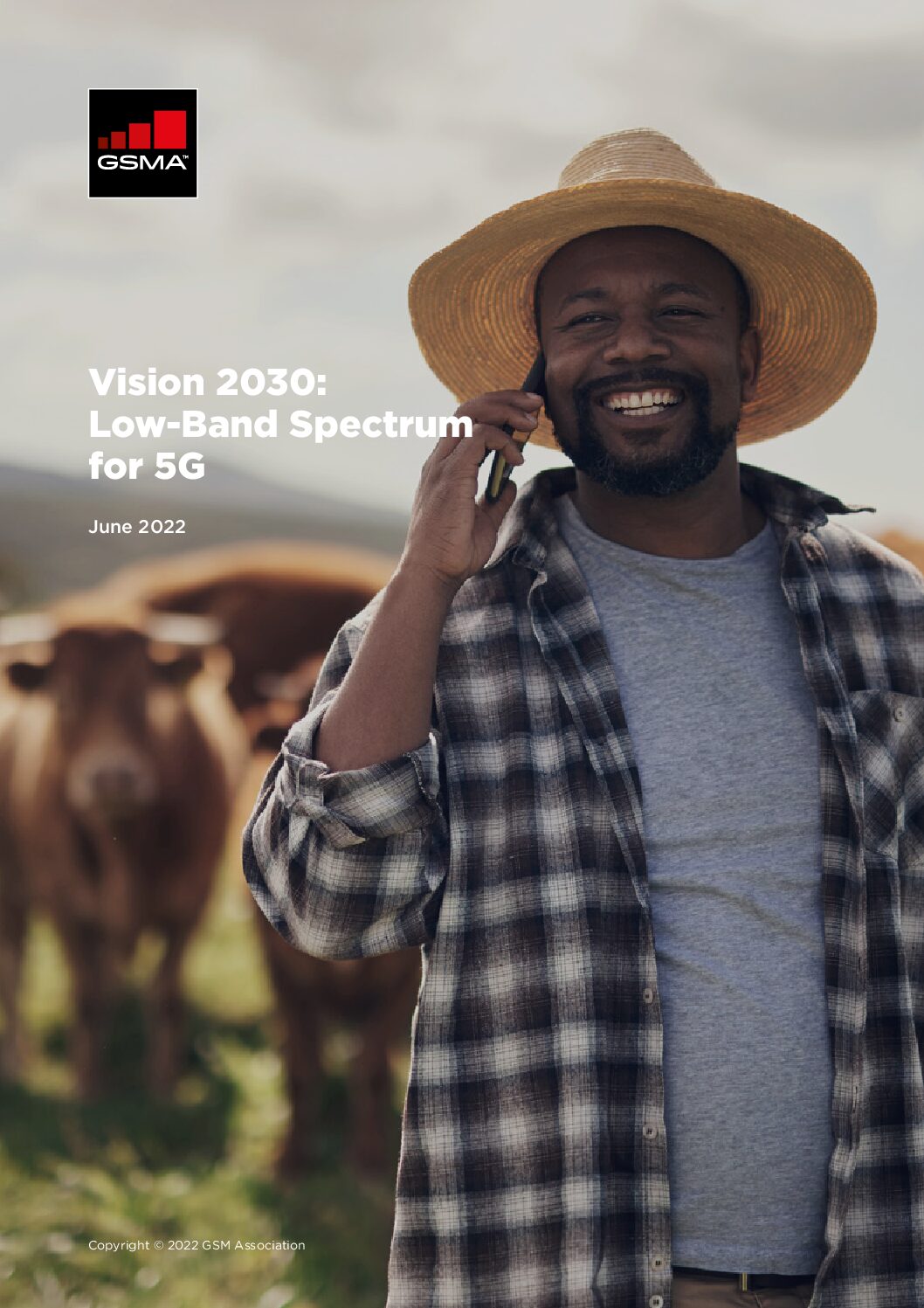Vision 2030: Low Band Spectrum for 5G
In this report, written for the GSMA, Coleago explores why low band spectrum is the cornerstone of digital equality and affordable connectivity to ensure that mobile’s economic and social benefits can be felt in all communities.
The accessibility and distribution of low-band spectrum are essential prerequisites for fostering digital equity and advancing widespread, cost-effective connectivity. Recognised as a pivotal national asset, its deployment has the potential to bridge the gap in digital inclusion, thus enabling the full realisation of mobile technology’s economic and social advantages across diverse communities.

Low band spectrum not only assists governments in attaining social objectives but also serves as a catalyst in achieving digital parity between urban and rural regions. Its capabilities facilitate deeper penetration into buildings, broader coverage for IoT applications, and enhanced communication networks for transportation systems.
The necessity for increased spectrum allocation within this range emerges as a critical element in ensuring equitable access to urban-grade services for rural communities. This propels progress toward digital inclusion objectives. Furthermore, low band spectrum has the potential to deliver 5G speeds to rural areas and maintain consistent 5G user data rates even in less densely-populated areas, thereby minimising infrastructure costs.
As organisations evolve into industrial data platforms and integrate connectivity, IoT, and data-driven insights into their operations, access to robust connectivity emerges as an imperative. Ensuring that employment opportunities and economic sustenance are accessible across all market segments is pivotal for fostering balanced economic growth. Moreover, the support rendered by connectivity in the pursuit of environmental sustainability, particularly in the race towards achieving net-zero emissions, must be equally accessible across diverse demographics.
Addressing the digital divide necessitates the provision of affordable connectivity to all users, and low band capacity is poised to play a central role in democratising access to 5G for everyone. Embracing and harnessing the potential of low band spectrum remains fundamental in realising a future where equitable and affordable connectivity empowers communities and drives inclusive economic growth on a global scale.
Other insights

The European 5G Fairytale
For years, European policymakers and telecom operators have touted the impressive figure: “89% 5G coverage of populated areas.” On paper, this paints a picture of near-ubiquitous, high-speed connectivity. Scratch the surface however, and the reality looks quite different.

Maximising Shareholder Value in Spectrum Auctions
Spectrum auctions, while common in the telecom industry, are complex and high-risk events that can significantly influence a company’s long-term performance. Missteps, especially vague auction objectives and poor valuation discipline, can lead to substantial destruction of shareholder value.

Spectrum and Regulatory Challenges Related to eVTOLS
Electric Vertical Take-Off and Landing (eVTOL) aircraft are poised to revolutionise urban mobility, with commercial operations expected to begin as early as 2025 and significant growth anticipated by the 2030s.

Future of the UHF Band after 2024: An Analysis of Options in the UK
Coleago Consulting in collaboration with its client, the UK Spectrum Policy Forum, has released a landmark report, “Future of the UHF Band After 2034,” setting out a detailed assessment of the United Kingdom’s Ultra High Frequency (UHF) spectrum landscape. The report looks at the industry trends and the critical trade-offs required to balance the needs of Digital Terrestrial Television (DTT), Mobile Communications, and Programme Making and Special Events (PMSE).

The Polish 700 and 800 MHz Spectrum Auction: Insights and Global Lessons
Poland’s final low-band spectrum auction marks a pivotal moment in Europe’s 5G rollout, offering key lessons in auction design, cross-border coordination, and strategic spectrum management.

The Case for Strategic Spectrum Renewal
As spectrum licences approach their expiry date, a strategic approach to spectrum renewal is crucial. Traditional presumption of renewal in favour of incumbents may no longer serve the industry’s needs. Instead, a more strategic approach to renewal can optimise spectrum assignments and improve spectral efficiency by up to 40%.